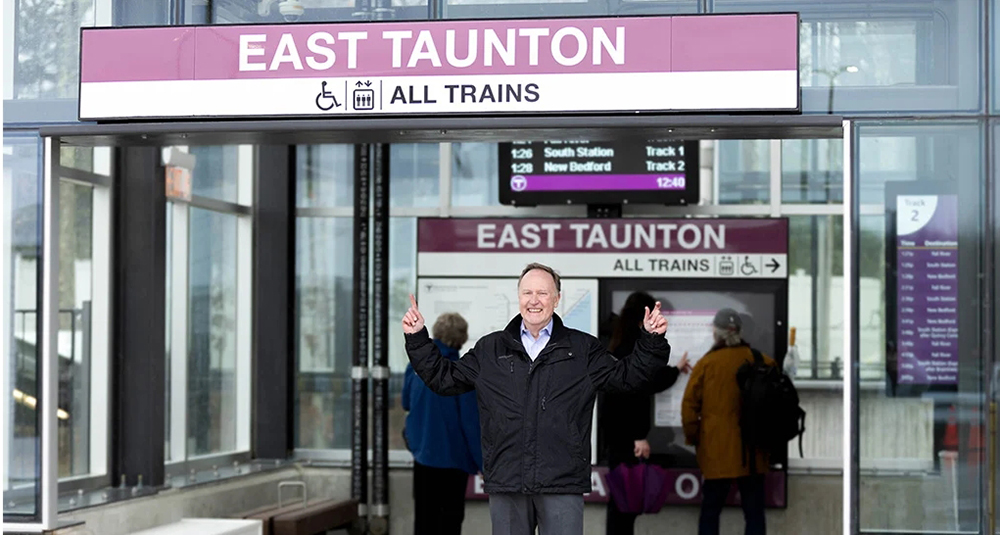News:
Spotlight Content
Posted: January 30, 2014
A rapidly recovering commercial market in 2014: Boston metro apartment sector leading the way
Two to three years ago there was serious doubt whether the real estate Industry would ever survive the Great Recession that we were all experiencing in this Country.
Unemployment was climbing with businesses laying off large numbers of people and giving up their office, retail and industrial spaces and demand for apartments dropped way down. The term "Phantom vacancy", which included subleases on the market, meant to most that our physical vacancy rates were really much higher.
2010/2011 started to bring some growth and the apartment sector began to heat up in 2012 and became central to the commercial real estate economic recovery and has led the way ever since while remaining strong in 2013.
In the Boston Metro area, we will continue to see the apartment sector lead the way in commercial real estate. Apartment vacancy rates will stabilize in 2014 at about 4% depending on the sub market. With about 50 new apartment projects, representing approximately 3,400 units in some phase of development, in the in-town Boston and its immediate surrounding area, submarket, vacancy in Boston will inch up slightly causing short term increases in vacancy and no rent growth while these new projects are absorbed and begin to stabilize. Pent up demand and the continued tight market will continue to keep suburban apartment vacancy rates, lower at about, 3.7%.
A sluggish job market and weak wage growth, according to the National Association of Realtors, will keep rent growth lower than what would be normally expected with such a tight market and low vacancy rates. It is forecasted that rents will rise at approximately 3%, which is lower than was realized in 2013 and 2012. As long as there are no major bumps in the economy, we can expect about the same into 2015.
The office market continues to be in a slow recovery although improving, and once again it depends on the submarket. Boston's Financial District, where the financial and professional companies have consistently accounted for a significant portion of the office demand in that area, actually ended the year, 2013 at a vacancy rate of just below 10% specifically at 9.6%.
The bio and high tech office/industrial market in East Cambridge continued to heat up with an average vacancy rate of about 6% with new leases being signed as high as $60 per s/f. This increase in rent has actually helped the new and developing Seaport District to become a prime area for many of these and new companies to relocate into, especially those looking for Class A space and at a much more reasonable rent. This is beginning to change as more leases have been signed and new construction is not keeping up with the demand.
The suburban office market continues to compete for a limited number of tenants and depending on which beltway, Rte. 128 or Rte. 495, is experiencing anywhere from a low of about a 12% vacancy rate, in the northern reach of Rte. 128 to a high of an 18% vacancy rate, in the southern portion of the beltway. Rte. 495 is overall experiencing a higher vacancy rate of approximately 23%. As the economy strengthens it is forecasted that the suburban office vacancy will decline only slightly in 2014 as office buildings continue to compete for tenants. Also, the in-town Boston office market will continue to gain strength with a declining vacancy rate and increasing rents, on a per s/f basis.
Lastly, the retail market ended the year, 2013 with a vacancy rate within the low end of the major national markets, at approximately 6.6%. The suburban market had a slightly higher vacancy, and there were a few large lease signings which helped to keep the suburban rate in line with the average rate. The Boston market was once again in the top 10 retail markets. Overall net absorption was positive with average rents rising approximately 1.5%. In 2014 we will see the retail market strengthen even more with the high end shopping areas, such as Newbury St., Chestnut Hill, etc. having an even lower vacancy rate. The metro market will have another year of net absorption of space delivering approximately 2 million s/f of new retail space and vacancy should fall to within the upper 5% range with effective rents increasing an average of 2%.
Chris Mellen, CPM is the vice president of the Simon Companies in Braintree, Mass.; and the national secretary/treasurer of IREM.
Tags:
Spotlight Content
MORE FROM Spotlight Content
Check out the New England Real Estate Journal's 2025 Fall Preview Spotlight
NEREJ’s Fall Preview is Out Now!
Explore our Fall Preview Spotlight, featuring exclusive Q&As with leading commercial real estate professionals and in-depth byline articles on today’s most relevant market topics. Gain insight into the trends, challenges, and opportunities shaping New England’s commercial real estate landscape this fall.
Explore our Fall Preview Spotlight, featuring exclusive Q&As with leading commercial real estate professionals and in-depth byline articles on today’s most relevant market topics. Gain insight into the trends, challenges, and opportunities shaping New England’s commercial real estate landscape this fall.

Columns and Thought Leadership

Shallow-bay wins on 495/128: A renewal-driven market with a thin pipeline - by Nate Nickerson
The Boston industrial market entered mid-2025 in a bifurcated state. Large-block vacancy remains elevated, while shallow-bay along the 495/128 corridor continues to prove resilient. Fieldstone’s focus on this geography positions us squarely in the middle of a renewal-driven, supply-constrained

How do we manage our businesses in a climate of uncertainty? - by David O'Sullivan
These are uncertain times for the home building industry. We have the threat of tariffs mixed with high interest rates and lenders nervous about the market. Every professional, whether builder, broker, or architect, asks themselves, how do we manage our business in today’s climate? We all strive not just to succeed, but

How long should I hold a property for it to qualify as an investment property in connection with a 1031 tax-deferred exchange? - by Brendan Greene and Mark McCue
Internal Revenue Code (IRC) Section 1031 provides “No gain or loss shall be recognized on the exchange of property held for productive use in a trade or business or for investment if such property is exchanged solely for property of like kind which is to be held

30 years on South Coast Rail: A journey to connect Southeastern Mass. with commuter rail - by Rick Carey
On March 24, 2025, a dream more than three decades in the making became a reality with the launch of the Massachusetts Bay Transportation Authority’s (MBTA) South Coast Rail commuter service. This milestone marks the completion of a project that overcame numerous starts and stops, including changes in leadership










.png)